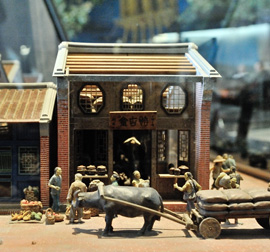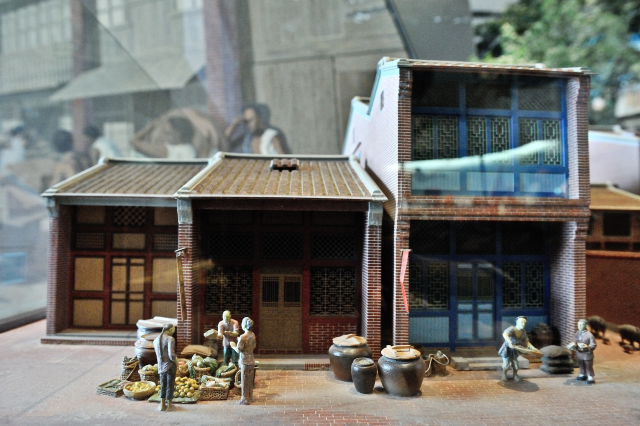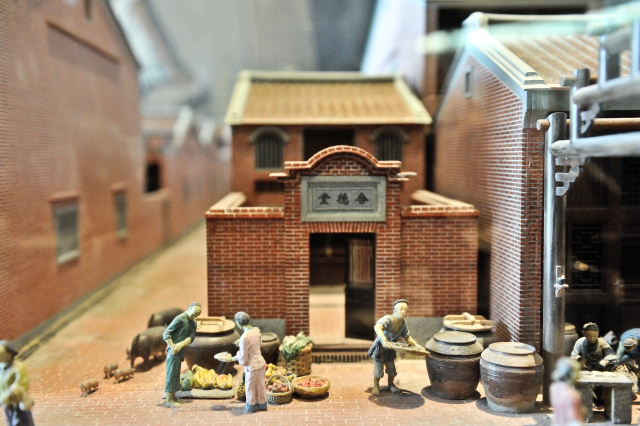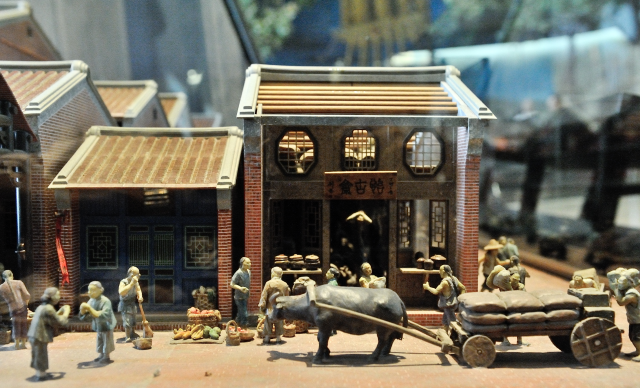:::
Street House of Lugang.
Due to political and economic considerations, the Qing government officially opened Lugang for immigration in 1784, transforming it into the second largest port city in Taiwan. In late 18th century, Lugang entered its heyday in terms of business, and it became an important distribution and export port for rice and grains in central Taiwan.
The model shows how space was used in Lugang’s street houses during the Qing Dynasty. A standard street house in Lugang had two entrances, and side facing the street usually consisted of wood screens. The first entrance was relatively deep and large, in order to carry out the functions of trade, prayer and storage. The space inside consisted of the storefront, main hall and deity hall. There was usually a square stairwell in the main hall with a ladder next to it for accessing the mezzanine, which was frequently used as storage or guestroom. There was a small courtyard between the first and the second entrance (also known as a skylight), with a wall on one side and passage on the other side. The second entrance leads to the living space of the household, with a “hall in the front and rooms in the rear” configuration. If a third entrance exists, its function and layout would be identical to that of the second entrance. The cooking space was usually in the courtyard or the open passage in the backyard.













